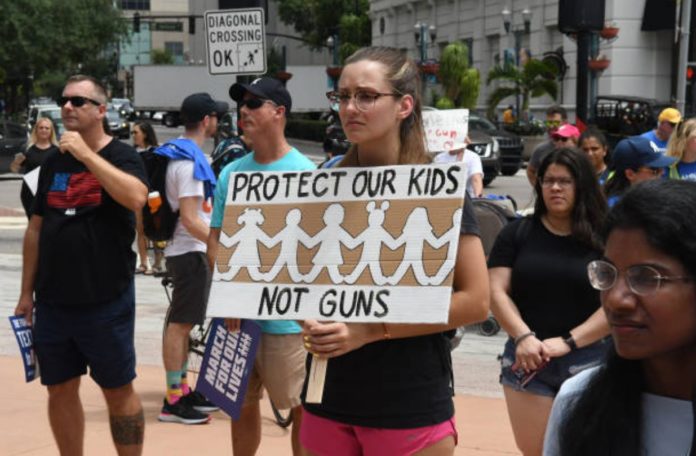Analysis Of American’s Firearm Background Check Data Points to Only One Thing: More Guns Than People
How have statistics from gun background checks, a proven indicator of sales of firearms, changed over the last 20 years?
In Chaos, a team of researchers from New York University and Northeastern University investigates the factors that influence background checks, as well as whether or not there is coordination between U.S. states and whether or not one state exerts influence over others in terms of passing gun laws or acquiring firearms.
Studying collective dynamics, network systems, and causal relationships from time series necessitated the development of novel mathematical tools and statistical approaches.
To understand the patterning of firearm background check data, the researchers devised a dependable and rigorous mathematical method.
In order to accomplish this, they substituted a quantification of synchronization for any potential interstate coordination.
According to Rifat Sipahi of Northeastern University, “from a first look at the background check data, we observed rich patterns of annual and high-frequency oscillations throughout the U.S..”
The researcher adds: “Oscillations between states may be in phase or out of phase, with the former class defining synchrony and coordination among the states, and the latter pointing to disarray among them.”
Surprisingly, scientists discovered that these patterns of frequency oscillations vary with time. This shows that under the administrations of former Presidents George W. Bush, Barack Obama, and Donald Trump, states may have engaged with one another differently.
Even though the researchers don’t talk about political science or sociology in their paper, their findings can help us learn more about these domains.
According to Maurizio Porfiri from New York University, “specifically, our results can help explain the behavior of U.S. citizens toward firearm acquisition in different states at different times.”
For instance, during Obama’s first term in 2010–2011, the United States’ states lost their synchronization, which came in the wake of one of the biggest financial crises.
Different states must have experienced the effects of this crisis differently, which may be a factor in the breakdown of synchronization.
They found a big drop in synchronization after 2018, which is when Trump’s term started. Even after the COVID-19 pandemic was disregarded, this loss of synchronization was severe.
“While we cannot make causality claims, it is likely that political, social, legal, and economic climates within the U.S. during (Trump’s) term had some effect on the behavior of citizens toward firearm acquisition,” Sipahi adds.
“Equally important, high-frequency oscillations in the background check data present similar patterning between Obama’s and Trump’s first term – indicating similar response of citizens toward firearm acquisition.”
It is important to stress that these interpretations do not indicate that a president in office is to blame for the loss of synchronization or the opposite.
It may imply that there are a variety of factors that affect how Americans in various states behave when it comes to purchasing firearms and that these factors cause synchronization to vary over the course of a presidential term.
This work relies heavily on synchronization.
“In a nutshell, if we consider two states with oscillating background check data, we would say these are perfectly synchronized if their oscillations are perfectly in phase – meaning they oscillate up and down at the same time,” according to Porfiri.
“Obviously, the real world is far from ideal, and perfect synchrony does not exist. So we quantified the degree of synchronization by the ‘Kuramoto order parameter’ for annual oscillations in the background check data.”
They drew a graph of the degree of synchronization over time and found that the states have been very in sync for the last 20 years, except for 2010–2011 and after 2018.
“Synchronization has some temporal characteristics, which complements prior evidence that pointed out spatial patterns in firearm acquisition in the U.S. Its highs and lows may depend on the geographic location of the state,” explains Sipahi.
Image Credit: Getty
You were reading: Gun Control: When And How The US Lost Control Of Firearms
